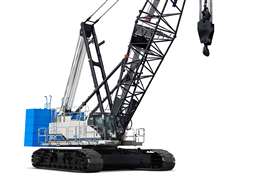Cummins begins development of 6.7, 15 L H2 engines
23 September 2021
Cummins Inc. announced that its hydrogen-fueled internal combustion engine (H2-ICE) program is beginning development of a medium-duty 6.7 L and a heavy-duty 15 L platform.
Part of the development work to be undertaken at Cummins Darlington, England, facility will be supported by approximately $10 million from an award announced in August by the U.K. government, provided through the Advanced Propulsion Centre (APC).
“We’ve established significant goals as part of our Planet 2050 sustainability strategy, including a target of zero emissions,” said Srikanth Padmanabhan, president, Engine Business, Cummins Inc. “Reducing well-to-wheels carbon emissions requires innovation of both energy sources and power solutions.
 Cummins said it has begun development work on hydrogen engines based on its 6.7 L and 15 L (shown here) diesel engine platforms.
Cummins said it has begun development work on hydrogen engines based on its 6.7 L and 15 L (shown here) diesel engine platforms.
“While use cases for battery electric and fuel cell electric powertrains are promising, the pairing of green hydrogen in the proven technology of internal combustion engines, provides an important complement to future zero emissions solutions.”
Based on next-generation platforms, the goal for the hydrogen engines is to achieve zero carbon emissions, and enhanced power density and improved thermal efficiency.
“Cummins’ leadership and deep knowledge in the global natural gas vehicle market and gaseous-fueled technologies will enable us to develop these new hydrogen-fueled internal combustion engines for medium and heavy-duty markets,” Padmanabhan said. We are ready to accelerate the pace of our H2-ICE program to ensure Cummins continues to be a leader in this new, exciting technology.”
The development of the 6.7 L hydrogen engine will focus on medium-duty truck, buses, and construction applications, such as excavators and wheel loaders. A new 15 L platform offers the potential to bring hydrogen gas-fueled engine capability to heavy duty long-haul trucks, the company said.
 Srikanth Padmanabhan
Srikanth Padmanabhan
Cummins said its global technical centers will work together to achieve commercial viability for the H2-ICE project on a global basis.
Cummins said that using existing engine platforms for the H2-ICE program also means that it will be able to use its existing engine production facilities and service support network reducing costs and improving efficiency. In addition. the company can also reduce vehicle and equipment re-development timelines, as many existing driveline components can be retained when paired with the hydrogen-fueled engines.
Cummins offers another resource in terms of integrating the hydrogen engine with the high-pressure gas vessels and supply lines it makes through its NProxx joint venture, which can be installed on the vehicle or the equipment. Cummins role in expanding the hydrogen economy also extends to the design and manufacture of PEM fuel cells and renewable green hydrogen by proton exchange membrane (PEM) electrolyzers, linking a Cummins hydrogen ecosphere from production to vehicle power and fuel storage.
The Advanced Propulsion Centre (APC) collaborates with U.K. government, the automotive industry and academia to accelerate the industrialization of technologies, supporting the transition to deliver net-zero emission vehicles. With its sector expertise and knowledge of new propulsion technologies, APC’s said its role in building and advising project consortia helps projects start more quickly and deliver increased value.






